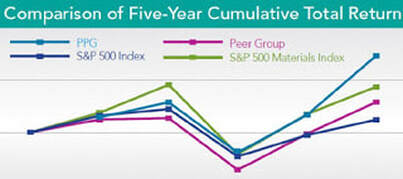 The CEO of a firm is given power to control the firm. That is because the purpose of the CEO role is to create a position that has centralized control, to enable consistent formulation and execution of strategy. The CEO is in turn governed by the board of directors, who also have a say on the strategy and who assess the results of the strategy execution. So far so good, but then there is the question of how much power the CEO should have, and what happens when the CEO has too much power. Here is a classic example of too much power: The CEO can influence how the board of others assesses the CEO by choosing the reference group of other firms and CEOs that this firm is compared against. Do some CEOs really have this power? Does it benefit them? Does it harm the firm? Research by Pino G. Audia, Horacio E.Rousseau, and Sebastien Brion published in Organization Science gives the answers: Yes, yes, and yes. The key here is that a firm can be compared either against a standard reference group such as an industry average or a reference group that is tailor-made to suit someone in the firm. Remarkably, even though the SEC guidelines strongly warn against tailor-made reference groups, 30% of the firms in the data they analyzed had them. Interviews indicated that although this choice of reference group should be done by the Chief Financial Officer (CFO), the reality was that the CEO was often deeply involved. So yes, at least in some firms CEOs had the power to change how they were assessed. Did they benefit from this power? The simplest and arguably most meaningful measure of benefit is how much the CEO is paid. Controlling for everything else that influences pay, CEOs of firms with tailor-made reference groups were paid more when the firm performance was lower. So, clearly the point of a tailor-made reference group was to get paid more when firm performance indicated that they did not deserve it. It was an insurance policy. Were firms harmed? The question of harm is difficult to answer, but it is easy to discover whether others tried to penalize the firm. This they did. Securities analyst coverage and rating of a firm’s stock is very important for the firm value, and securities analysts quite systematically downgraded firms to a lower rating or even stopped following them if they had tailor-made reference groups. The firm’s owners also reacted, as they saw an increase in governance resolutions filed by shareholders at the annual meetings. The CEO use of power to shape the assessment of the firm’s performance was consequential for the CEO and the firm, and as we might expect, in opposite directions. The CEOs used their power to benefit themselves in ways that hurt their firms. This, at least, gives one answer to the question of what it means to give a CEO too much power to control the firm. Audia PG, Rousseau HE, Brion S. 2021. CEO Power and Nonconforming Reference Group Selection. Organization Science, forthcoming. Comments are closed.
|
Blog's objectiveThis blog is devoted to discussions of how events in the news illustrate organizational research and can be explained by organizational theory. It is only updated when I have time to spare. Archives
May 2024
Categories |
 RSS Feed
RSS Feed